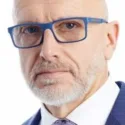In this increasingly fast-paced world it’s interesting that the principles that we operate by haven’t changed much in decades. I remember an interview by Time magazine’s Curious Capitalist back in 2008 with the CEOs of two very successful US retailers – Whole Food Markets and Container Store, where they revealed they had both gone through a process of brand development before they had even set their businesses up.
Although I paraphrase their interviews, back then each of them expressed defining their brand as a way of establishing focus that made the development of their businesses far more efficient.
Brands provide focus on all levels and in today’s fast-paced, digital environment you need more focus than ever. You can’t, for example, hope to progress a business transformation, with the pace and efficiency organisations need to succeed these days, without a clearly defined brand – it simply won’t work. Hence my “Brand-led Business Transformation” programme.
I’m coming to the end of a project right now that proves beyond doubt the influence a strong brand has on both the ability of a business to respond to market changes and its reputation, but fundamentally, it is about focus. Today I read an article that reinforces this still further. Julian Macedo reflects on his first year in business and the importance of the brand he defined at the start of his journey. The message is far too clear and consistent to ignore.
Meanwhile, although it dates back to 2008, the article I wrote about the US retailers (below) illustrates that the principle of branding has always been critical to business success. It’s just that these days the impact it has on the organisation’s speed of response and overall efficiency is more critical than ever. I guess some things don’t change after all.
There’s a Right Way and a Wrong Way (Originally posted on 5th September 2008)
I’ve just spent two weeks looking into a company whose brand has massive awareness. Great, you might think, but no, because while everyone has heard of this business, it seems to me that they have massive negative equity. Like Walmart? No, way worse than that. This business seems to be universally hated!
I say “seems to be” because I can’t say for sure – they have no research. A basic omission you may think, but they didn’t seem to agree and don’t want to pay for any. I did the usual on-line checking, but this was hampered by a massive web farm they had set up to control negative comment and social networking (a sure indication of a business that had their priorities up their ar*e!). It seemed to support my intuition, but I didn’t come up with enough hard facts.
Staggeringly, this business is big, number one in their sector with fourteen years of YonY growth. How did they do it? Actually, it isn’t that big a mystery. They succeeded on a rising market, with no competition, where all they had to do was turn up and set out their stall, then count the money – and they milked it! Inexperienced and sometimes just plain stupid management had made just about every mistake in the book, screwing over customers, suppliers and partners alike. However – and I love it when this happens! – they seem to have reached the end of their road. Economic conditions, social change, emerging competition and saturated markets have conspired to hack their share value to bits and turn their business into a shadow of its former self – send for the consultant!
After that imagine how refreshing it was to come across not one, but two businesses that had got it all right. Sadly, they are not my clients, but in an interview with Time Magazine’s The Curious Capitalist John Mackey, CEO and co-founder of Whole Food Markets and Kip Tindell, CEO and co-founder of Container Store, gave me the kind of lift that’s only possible when all your firmly held beliefs are affirmed in a single action.
These guys tick all the boxes in my Full Effect Marketing philosophy and Brand Discovery programme. In this lengthy interview they explain how important it has proven to them as entrepreneurs to have defined the parameters of their brands up front. They didn’t tackle this in a particularly formal way but, as is the case with so many great entrepreneurs they each instinctively created what I call a “Brand Model”, without which their businesses, and anybody else’s, would not be scalable.
Once you have this the rest is possible, if not always simple. I still have a struggle sometimes driving my clients through the process of internal marketing – sharing the model, its reasoning and constraints with employees at every level and getting them behind the cause, but as John and Kip knew, empowering your employees is the vital key to growth. The client, whose tale I opened this post with, complained at our first meeting that he was forced to micromanage because his people weren’t up to the job. I argued that things aren’t always what they seem and that I usually find that the “people” aren’t always the problem that they seem. “But what if they are the problem?” he asked. “I guess you have to have a clear out” I replied.
Of course you have to have great people to have a great business, and John and Kip both underline how important it is to recruit the best, but how great they are is very much dependent on how well you manage them and again, instinctively John and Kip knew this.
A great business is built around a great brand. Every brand is a community that all your stakeholders play a part in creating. Again, after my experience with the client I feel the need to clarify – stakeholders are investors, suppliers, partners, employees as well as customers. You have to ask yourself, “Are these people, who I want to do business with going to want to be a part of my community?” and when you get a “yes” you then set about making them feel as welcome, engaged and comfortable as you can.
These two talk about the importance of engaging your employees and your suppliers, how vital it is to share information with your community and confirm that though there will undoubtedly be leaks as a result the advantages vastly outweigh the disadvantages. They talk about the innovation and risk – both requisites of business growth, best quality and satisfying and delighting. I could have filled this post with clips from the interview, but go there and read for yourself.
It didn’t take me two weeks to realise that what my client wanted was for me to paper over the cracks in his business. He didn’t want to change it, I doubt that he would even be flexible enough to do so and I suspect that anything I would do would be too little too late anyway. I’m not even sure even now that he recognises how serious his situation is.
Unsurprisingly, he isn’t a client any longer. Which is a pity, because I do love a challenge, I hate to give up on anything and I could see the glimmer of a couple of opportunities, but I doubt I would have been able to persuade him to explore them. To quote John, or was it Kip, “Life’s short and then you are dead” so I’m off to find my next project.
Article by channel:
Everything you need to know about Digital Transformation
The best articles, news and events direct to your inbox







